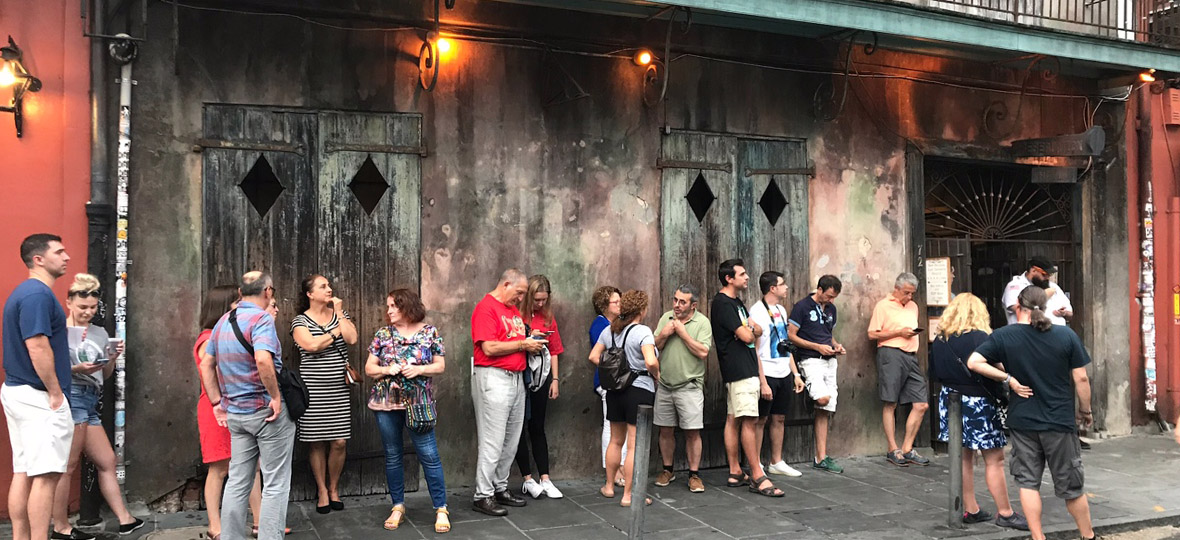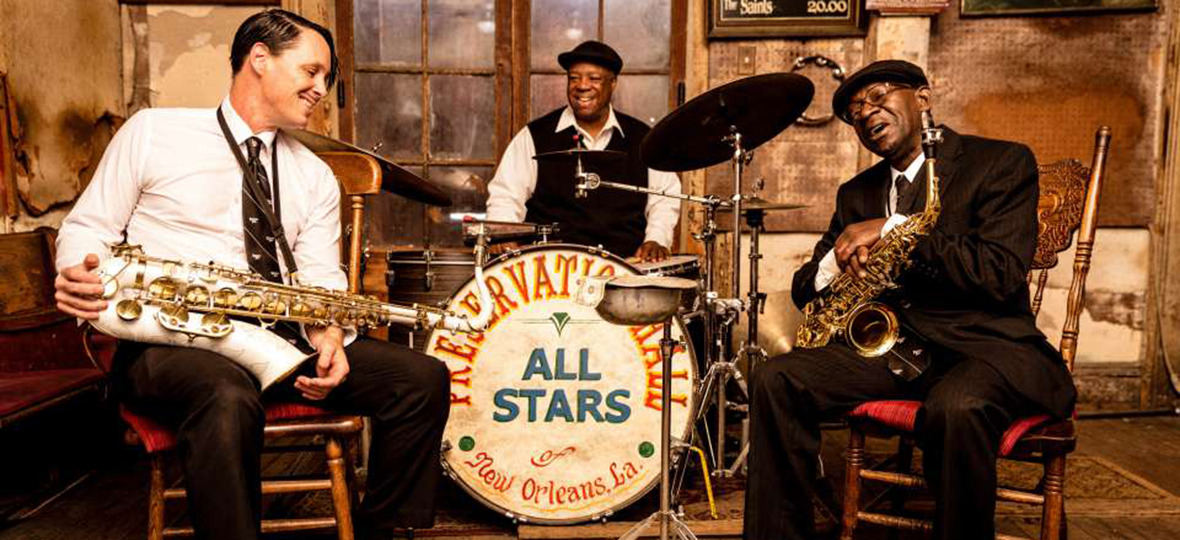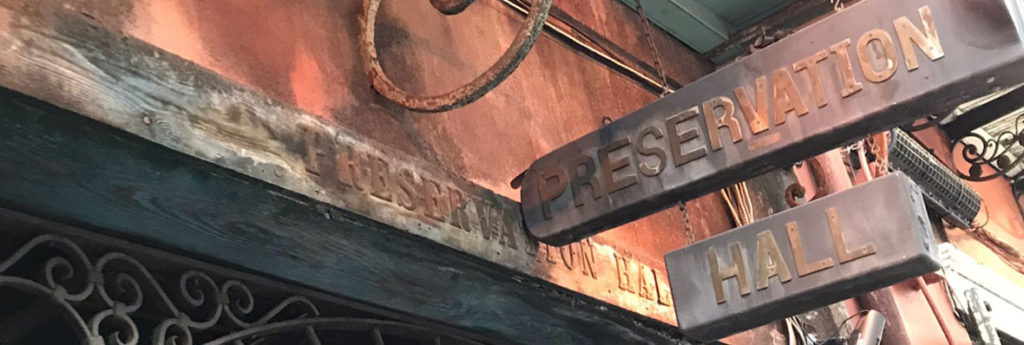New Orleans is famous for a lot of things, among them the French Quarter, Mardi Gras, a colourful history, authentic American music (jazz, blues, Cajun) and amazing food, but my thoughts and memories of the Big Easy inevitably settle in Preservation Hall.
The iconic venue is located in the heart of the French Quarter within sight of Bourbon Street, but that doesn’t mean that visitors will easily find it, save for the tell-tale line-ups down Peter Street patiently waiting for the next performance inside.

Even the small marquee, hanging above the “unimproved building” from the early 19th century, is rusty and hard to read.
Inside is no better – at least not spiffier. The small hall – it’s really no more than a room to be precise – accommodates about 50 people on benches, the walls downright dingy with only a couple of old paintings still reluctantly hanging. A few lucky guests can sit on the floor in front of the tiny stage, perhaps even dodging a trombone slide as I did on my first visit.
But the “shabby chic” is an integral part of the charm.
That said, Preservation Hall is about the music, not the décor. Nor about food or drinks, which are not served. Established in 1961 to honour traditional New Orleans Jazz (Dixieland), today the Preservation Hall Jazz Band is a unique collective of about 50 local musicians who rotate through performances, albeit with a slightly wider musical scope than in early years. There is also a touring band and non-profit organization associated with the Hall.

Multiple performances each night last about 45 minutes and are better described as jam sessions than a formal concert, and take place almost every evening on the hour between 5 and 10 p.m. Thurs-Sun; (and 7-10 other nights) and vary in tone and tune according to the night’s collective and the character of the audience in any particular session.
However, each set is uniformly performed by a top-notch brass band, typically consisting of saxophone and clarinet, bass and banjo, trombone and tuba, drums and piano, and leading a traditional musical journey through the city with stories, virtuoso solos, and songs known and otherwise, including, if one is lucky, the famous “Saints” (“When the Saints Go Marching In”).
On my first visit in 1984, payment – charmingly – was merely a “suggestion” and guests could stay as long as they liked (although it was frowned upon if one lingered longer than two sets), but today tickets are required (and should be arranged in advance). General admission is US $20, with discounts for students and seniors and kids five and under are free.
On rare and special occasions, the band may assemble for a parade around the quarter and anyone in the vicinity can be part of the “second line” march (following the “first line” musicians).
It’s the stuff of movies, and, in my case, the stuff of dreams.

